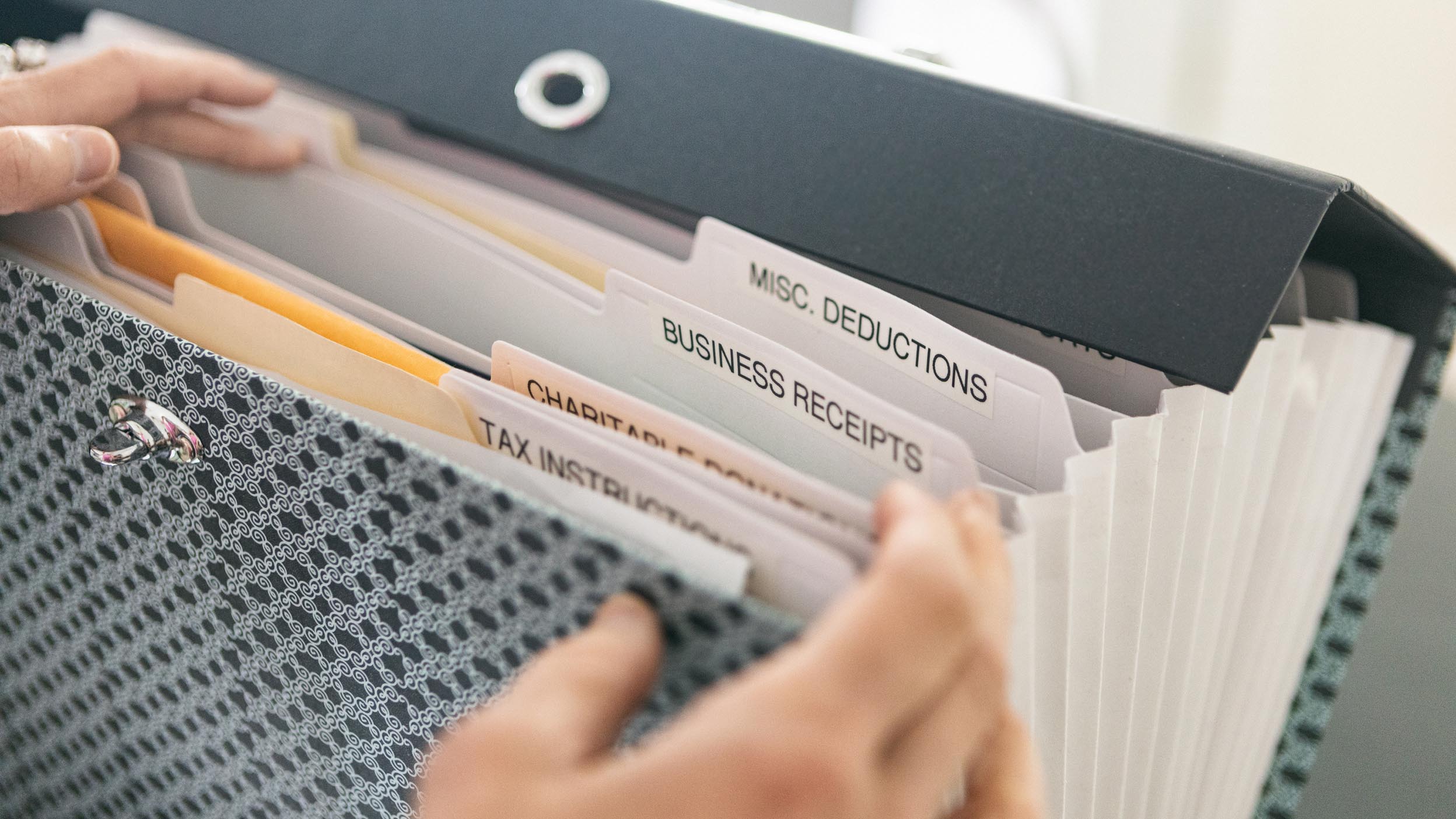
Tax & Estate planning Tax savvy: Navigating 2024 filing changes
Learn what you need to know about 2024 tax filing and what’s coming in 2025.

An RESP subscriber is the individual who enters into an RESP contract with an RESP provider and names one or more beneficiaries on whose behalf they will make contributions. The primary purpose of an RESP is to fund a beneficiary’s (or more than one beneficiary) post-secondary education with access to certain government incentives and income-splitting opportunities. The subscriber has beneficial ownership over the property in the RESP. A beneficiary of the RESP has the right to access the RESP funds for post-secondary education purposes (subject to the subscriber’s approval); however, they do not own the RESP funds despite being named as a “beneficiary” of the plan, nor do they automatically inherit the RESP in the event of the subscriber’s death. If they wish, the subscriber has the freedom to wind up or withdraw from the account through a refund of contributions, although the government incentives (government grants) received by the RESP, such as the Canada Education Savings Grant (CESG), are returned to the government if not used for educational purposes.
Upon the death of a sole subscriber, the assets in the RESP form part of their estate. The treatment of the RESP is subject to any provisions made in the subscriber’s will. That said, any provisions in the will should not contradict the administrative policy of the RESP promoter, or any government legislation related to RESPs. It is, therefore, important to address the RESP in the subscriber’s will to ensure the plan is dealt with according to the subscriber’s wishes. It is generally not possible to name a successor subscriber on the RESP itself. Furthermore, it is critical not to confuse an RESP “beneficiary” with the type of beneficiary named on other registered plans such as a Registered Retirement Savings Plan (RRSP) or Tax-Free Savings Account (TFSA). In the case of an RRSP or TFSA, the beneficiary is entitled to the assets in the RRSP or TFSA upon the original accountholder’s death. In the case of an RESP, the beneficiary is never the owner of the funds (unless the beneficiary also happens to be the subscriber) and may only receive funds from the RESP if they pursue a qualified post-secondary education program.
Since the assets in an RESP form part of the subscriber’s estate, the fair market value of the RESP at death – after the deduction of certain funds the estate is not entitled to receive – may be subject to probate tax in the province in which the deceased subscriber last resided. There are, however, some exceptions to this rule, explained below.
It is possible to set up an RESP as joint tenants with right of survivorship (JTWROS) in any province or territory in Canada except Quebec. It is important to note that generally, only spouses or common-law partners can be joint subscribers. However, effective March 28, 2023 (upon the tabling of the 2023 Federal Budget), divorced or separated parents can open joint RESPs for their children and are able to move an existing joint RESP to another RESP promoter. Upon the death of one subscriber, the surviving subscriber automatically takes over the RESP as the sole subscriber under the “right of survivorship” provision and continues to manage the RESP on behalf of the beneficiary. The assets in the RESP do not form part of the deceased subscriber’s estate and, therefore, are not subject to probate. In addition, there are no immediate income tax consequences.
JTWROS is not recognized in Quebec. A joint RESP in Quebec is considered to have been set up as tenants in common (TIC), under which each subscriber’s share in the account is passed to their own estate and dealt with in accordance with their will.
One method to continue the RESP beyond the original subscriber’s death is to name a successor subscriber in the will. A successor subscriber would assume all rights and entitlements of the original subscriber, except for a restriction on transferring the RESP funds as an accumulated income payment (AIP)1 to the successor subscriber’s RRSP (this restriction only applies to a non-spouse successor subscriber). Essentially, the RESP is treated as a gift from the deceased subscriber to the successor subscriber, who obtains full control over the RESP. The RESP funds can remain invested on a tax-deferred basis until the RESP beneficiary pursues post-secondary education, or they can be redeemed as a refund of contributions and/or an AIP by the successor subscriber.
Although it is typically the original subscriber’s intention when opening an RESP to benefit the beneficiary(ies), the successor subscriber is not obligated to fulfil that intention. The successor subscriber could choose to liquidate the account by requesting a refund of contributions and/or an AIP for their own benefit, which may trigger a return of government grants and deprive the RESP beneficiary(ies) of any payment for educational purposes.
In terms of probate, generally the value of the RESP is exempt from probate fees when an individual is named as the successor subscriber in the will.
Another option to ensure continuity of the RESP after the death of the original subscriber, is to have the estate of the deceased subscriber take over the RESP. The general rule is that the subscriber of an RESP needs to be an individual other than a trust; however, in the event of the original subscriber’s death, their estate or a testamentary trust established under their will is allowed to become the subscriber. The subscriber can include specific instructions in the will for the estate trustee to follow – for example, instructions related to investment options for the RESP and how to deal with the RESP funds if the beneficiary does not pursue post-secondary education. Subject to the terms of the will, the estate can make further contributions into the RESP, provided the $50,000 per beneficiary lifetime contribution limit has not been reached. The funds will continue to grow on a tax-deferred basis, and the RESP beneficiary can use the funds in the RESP for educational purposes by making educational assistance payment (EAP) withdrawals. Grants do not need to be repaid to the government due to the change in ownership of the RESP to the estate, unless the estate initiates a refund of contributions, or a beneficiary does not pursue post-secondary education. Alternatively, the RESP can be left to a testamentary trust, with specific trust terms included in the will or a separate trust instrument.
Both the estate and testamentary trust options allow the original subscriber to extend control beyond death by dictating how the RESP is to be managed according to their wishes. They may be considered where no suitable individual can be named as the successor subscriber, or if the original subscriber has specific instructions that they desire to be carried out (recall that a person appointed as successor subscriber is not legally bound by the original subscriber’s wishes).
In the scenario where a grandparent opens a family RESP that includes non-sibling beneficiaries (e.g., cousins), it may be prudent to check with the RESP promoter whether a successor subscriber who is not blood-related to all beneficiaries is allowed on the plan. For example, the grandparent may wish to name one of their children as the successor subscriber of the RESP. This individual may be the aunt or uncle of one or more of the beneficiaries in the RESP; however, nieces and nephews are not considered blood-related for family RESP purposes and, therefore, the individual the grandparent wishes to name may not be permitted to become the subscriber, depending on the administrative policy of the RESP promoter.
Without a joint subscriber or a successor subscriber named in the will, the value of the RESP that may be subject to probate is equal to the amount the subscriber or the estate is entitled to (generally calculated as the value of the RESP at the time of death, including any AIP entitlements net of the penalty tax, less any government grants).
It is necessary to address RESPs in the will to avoid unintended consequences. If the sole subscriber of an RESP passes away without addressing the RESP in their will, the RESP generally falls under the residue of the estate and is subject to division among the residuary estate beneficiaries. It is possible that one or more of the residuary beneficiaries may force the estate trustee to liquidate the RESP through a refund of contributions and/or an AIP and have the proceeds payable to the estate and then distributed according to the will. As a result, the RESP could be collapsed, with government grants returned, at the expense of the RESP beneficiary. Even if the RESP is not liquidated and ownership of the RESP is instead passed to one of the residuary estate beneficiaries (usually the parent of the RESP beneficiary), there may be further complications. Among other things, the value of the RESP may count towards that particular estate beneficiary’s entitlement under the will, even if the RESP is not for their own benefit, and this may in turn reduce their entitlement to other assets in the estate.
AIP is a payment of investment earnings in the RESP made to an RESP subscriber if certain conditions are met. For more information on AIP, please refer to our Tax & Estate InfoPage titled “Registered education savings plans (RESPs)”.

Learn what you need to know about 2024 tax filing and what’s coming in 2025.

The Tax and Estate team discusses the PFIC rules as they apply to U.S. residents holding foreign securities, including Canadian-domiciled mutual funds and exchange-traded funds.

The uncertain destiny of capital gains tax


Get the latest information and insights from our market strategists, investment experts, and tax and estate specialists.
You may unsubscribe from these communications at any time by emailing us at inquiriescanada@invesco.com or by calling us at 1.800.874.6275
NA3819976
Important information
Image credit : GettyImages
The information provided is general in nature and may not be relied upon nor considered to be the rendering of tax, legal, accounting or professional advice. Readers should consult with their own accountants, lawyers and/or other professionals for advice on their specific circumstances before taking any action. The information contained herein is from sources believed to be reliable, but accuracy cannot be guaranteed.
This link takes you to a site not affiliated with Invesco. The site is for informational purposes only. Invesco does not guarantee nor take any responsibility for any of the content.